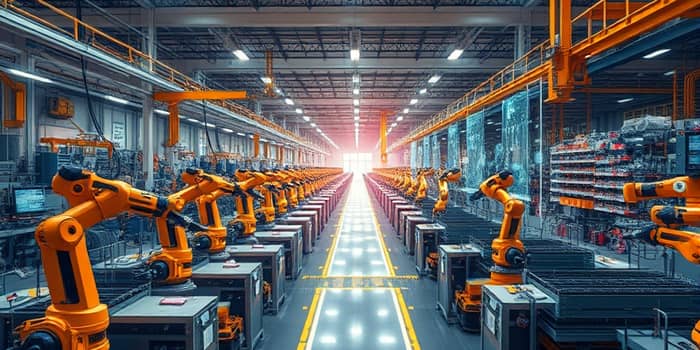
In recent years, artificial intelligence has leapt beyond its traditional home in Silicon Valley. Organizations across industrial verticals are implementing AI at scale, forging a path toward unprecedented levels of efficiency and growth. From automotive assembly lines to energy grids, AI is reshaping processes, products, and strategic decision-making.
This article explores the statistics, trends, benefits, and challenges surrounding AI adoption in manufacturing, energy, logistics, and beyond. It offers practical insights and inspiration for leaders ready to harness the power of industrial AI.
Global AI investment has soared in recent years. Corporate spending reached $92 billion in 2022, a more than sixfold increase since 2016. Today, 77% of companies are either using or exploring AI, with 63% planning global AI deployment within three years.
By 2025, nearly 97 million jobs will be associated with the AI industry, underlining the technology’s far-reaching impact on the workforce. Executives are no longer spectators: 53% report regular use of generative AI in operations, highlighting decision-making enhanced by generative AI across functions.
Among non-tech sectors, manufacturing stands out as the top adopter. The AI in manufacturing market grew to $5.94 billion in 2024 and is set to reach $8.57 billion by 2025, reflecting a staggering CAGR of 44.2%. Long-term forecasts predict a surge to $68.36 billion by 2032.
Adoption is especially strong in the U.S. (43%) and India (30%), where companies are investing heavily in robotics, analytics, and smart factory solutions. Core use cases include defect detection (up to 90% accuracy), quality control improvements of 35%, task automation, and predictive maintenance to minimize downtime.
Hardware accounts for 48% of industrial AI investments, software 32%, and services 20%. Robotics and edge analytics are key focus areas, enabling manufacturers to optimize supply chains and enhance production agility.
Beyond manufacturing, AI is making inroads across diverse industries:
Each sector leverages AI to drive smart factories powered by AI-driven automation and deliver new value propositions to customers and stakeholders.
Corporate enthusiasm for AI is rooted in its promise of competitive advantage. Firms expect a 40% productivity boost by 2035 as AI automates routine tasks and accelerates innovation cycles. Nearly 90% of manufacturing AI adoption is motivated by goals of growth, innovation, and efficiency.
Generative AI is also reshaping product design and prototyping. By automating complex simulations and generating design alternatives, companies can bring products to market faster and with greater precision.
Despite the excitement, industrial AI faces unique hurdles. Leaders must address:
Successful adopters prioritize cross-disciplinary teams, invest in upskilling, and deploy pilot projects to validate use cases before scaling.
Industry-led innovation is accelerating model development, with 90% of notable AI models now coming from industrial use cases, up from 60% in 2023. This shift signals the rise of distinct industrial artificial intelligence domain, combining deep operational expertise with advanced machine learning techniques.
Emerging trends include the integration of AI with IoT sensors, digital twins, and edge computing to enable real-time decision-making on the factory floor. Industry 5.0 concepts are gaining traction, focusing on human–machine collaboration and sustainable production.
The expansion of AI into industrial sectors represents one of the most transformative shifts in modern business. By harnessing bridging physical and digital worlds, organizations unlock powerful new capabilities—reducing costs, boosting quality, and fostering innovation.
As leaders chart their AI journeys, they must balance ambition with practicality: start small, prove value, and scale thoughtfully. In doing so, they will shape the factories, infrastructure, and products of tomorrow, driving resilience and competitive edge in an increasingly complex world.
The industrial AI revolution is here—bold action and strategic vision will separate the pioneers from the followers. Embrace the opportunity, overcome the challenges, and lead your sector into a new era of intelligent operations.
References













